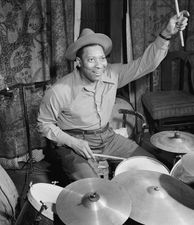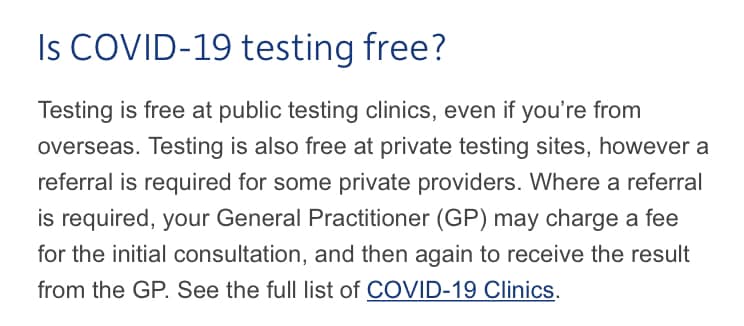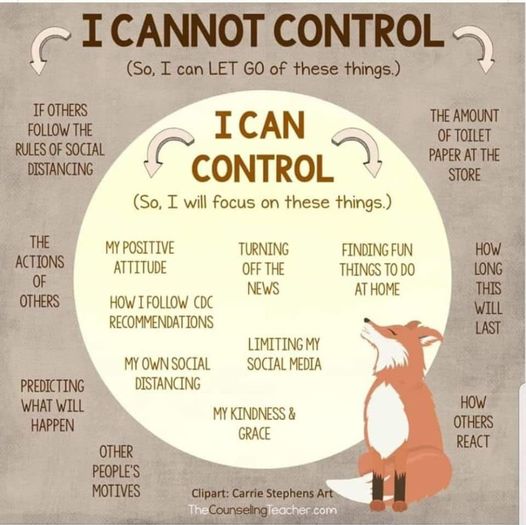It’s a mess of a day, but there’s hope.
Author Archives: dogpossum
Small Axes
I’m part way through ep1 of Small Axe, a BBC short film series about the West Indian community in London in the 1960s-80s. It’s directed by Steve McQueen and has a w o w cast (incl. Letita Wright and John Boyega).
If you want to know about the Black migrant history of the UK during this period, AND want regular doses of everyday eating, dancing, singing, and FIGHTING THE MAN, i reccomend. It’s a great companion piece to that BBC podcast series about Black music in Europe.
Quick, what’s a casual, non-confrontational way to tell your fave barista doods to put their masks over the mouth and nose, not just chin?
Is COVID testing free?
Is COVID testing free in NSW?
YES.
Even if you’re not an Australian resident?
YES.
Testing at private clinics
– Some private clinics need a referral from a GP to get the test, and the GP may charge or bulk bill for that appointment.
– There are some dodgy private clinics with misleading fb ads talking about charges. If you’re confused, go to a govt testing centre to be sure.
Nb Victoria beat us in testing numbers today. We can totally win tomorrow.
do not want
Things i don’t need:
– Julian Assange in my country
– to hear Vivaldi’s Four Seasons in a netflix show again
– any more moisture in the air
– Brett Whitely.
a new cluster in Sydney
It’s interesting to read that Sydney is still the main point of arrival for overseas visitors. So more people come through this city as they return to this country. And the chance of them having covid is increasing as numbers increase overseas.
The latest cases come from transport workers, who caught covid at work, driving o/s people.
Clusters then spread out from there, mostly into families and work networks.
I get quite upset when i read comments about the ‘thoughtless selfishness’ of infected people in the community. We know workplaces and extended family gatherings are key points for transmission. Being angry and nasty with people doing risky, low status work, who then spend time with (and often caring for) their families is… well, it’s poor form. Particularly from people who have the choice to work from home, self-isolate, and so on.
I don’t feel right about being nasty to infected people, who have, after all, contracted covid, and know they have infected their friends and family.
This type of angry fear leads to the authoritarian actions of police, which result in violence towards people of colour, the homeless, the disempowered. And it’s worth remembering that for wealthy people fines are just an inexpensive ticket. For the poor and disenfranchised fines mean incarceration, children and dependants left homeless, and time in the dangers of prison.
If you feel super angry about rising case numbers in NSW, that’s ok. When we’re frightened, we often get angry. If you’ve just come out of lockdown, you’re probably still dealing with the distress and tension of that experience. And being angry at people who seem to be triggering that happening again makes sense.
But you can’t change other people’s behaviour. You can only change how you respond to it. Be kinder to yourself. Stop looking at case numbers. Call a friend and tell them you love them. Go watch dogs play in the park. Have a swim. You’re doing a good job, and you deserve a break.
If you can, please donate to Sisters Inside.
Happy New Year
2020 hasn’t been so bad for me. I started it very ill in Stockholm, but I got to see Swedish friends away from the hothouse of dance events. During the year I missed my overseas friends very, very much*, but I also spent good times walking, eating, and playing in parks with visitors and locals. I didn’t dance once, but I rediscovered yoga, I went running, kicked a soccer ball, and rediscovered my colour pencils. Ironically, my mental and physical health were at an all time high this year, and I discovered my natural hair colour. The two aren’t necessarily related. I learnt the basics of carpentry, moved on with an advanced pattern drafting course, spent my first whole winter in six years in one time zone, and, perhaps most excitingly, I discovered foamcore.
If I could have one thing this year, it would be a kinder government, who chose to care for citizens and strangers instead of hurting them. If I could have two things this year, I’d add the chance to see and touch my friends again. I miss you all so much.
But most of all, this year I hope for happiness and good health, for every one of us.
*so much
Happy covid new year
If you are feeling a bit worried about the covid cases, Sydney, NSW Health on fb has the most up to date info. Our new local case numbers are low, and all are from known sources. It’s ok. ❤️👍🏼
Tip: don’t monitor it in real time. It will stress you out.
Tip2: melbourne people, maybe check the attached image.
Tip3: everyone: blaming people or getting angry will just make you feel awful. Just wash your hands, send love to friends, and do what _you_ can.
Tip4: Sydney, you rock at tight social timetables. Use that super power to avoid crowds and keep track of your movements.
Tip5: Sydney, no one can accessorise like you bitches. Mask up, peace fabulously out.
NSW Health fb updates:
They are super quickly tracing where infected people have been, and when, posting new lists of places every few hours. Following it in real time will freak you out.
The nsw health posts generally have 3 lists of places:
1. Urgent ones. If you were at these places at these times, get a test and isolate yourself immediately.
2. Less urgent, but still SRS. If you were at these places at these times, get a test and isolate immediately.
3. ‘Casual contact’. If you were at these places at these times, watch for symptoms and test if you have them.
So your jobs are as per usual:
1. Watch for symptoms. These vary as we learn more about covid, so refresh your knowledge regularly.
2. If you have symptoms, get a test.
Testing is the contact tracing super power. Testing is FREE and needs no appointment. Test early, test often.
3. Stay 1.5m away from people. Wash your hands PROPERLY. Wear a mask indoors. Your basic covid fighting super powers. You are SO good at this already.
Extra stuff:
- check your diary and the lists of venues. Know where you were at.
- avoid crowded indoor getherings in public places. Bars, supermarkets, public transport.
- if you can’t (going to work, at work, essential shopping), do no.3 jobs above.
I’m thinking of this as ‘be alert, not alarmed.’
Not full-on self isolation, but no indoor restaurants, crowded shops, etc. i’m being strict about hand washing and not touching my face. I wear a mask indoors, mostly so i can help ‘normalise’ mask wearing, and help the people panicking feel safer.
And because the tracing is including my neighbourhood now, i’m also keeping track of the places/shops i visit, so i can help with tracing if nec.
Keep being excellent, frens ❤️
Hello Sidney Catlett
After yesterday’s extra fun set for Tracktown Swing’s zoom party (fun), I’m feeling interested in jazz again. Overhearing Andrew’s interest in Sid Catlett’s drumming, I’ve been digging through the Catlett in my own collection.
I can’t remember listening to this song ‘How High the Moon’ by Al Casey and his Sextet (1945) before. The band has a pretty impressive line up:
Al Casey And His Sextet
Gerald Wilson (trumpeter), Willie Smith (alto sax), Illinois Jacquet (tenor sax), Horace Henderson (piano), Al Casey (guitar) John Simmons (bass), Sid Catlett (drums).
Every time I listen to a band like this I have to look up the personnel. Thank goodness for google. This isn’t Willie The Lion Smith, it’s another one. And I always forget what Horace Henderson played. I often forget he’s Fletcher Henderson’s brother too.
Things I noticed:
– There’s a bit in an Illinois Jacquet solo (at about 0.45) where the first few notes sound just like his famous part in Flying Home (with Hamp). I’m assuming it’s Jacquet. I have no clue tbh.
– The guitar is extra nice. I’m digging guitar in these sorts of swinging jazz songs atm, not as rhythm, but as soloists.
– The drumming _is_ nice.
Anyhoo, this is a nice song.
Here is Sid looking a bit over it.

It’s ok, mate, 2020 is nearly over.

There are a few recordings by Benny Goodman’s big band in 1941 that are off the charts HOT. Like, the best, tightest band, and they really swing.
I’ve just discovered that Sid Catlett was the drummer in the band for a few months in 1941, which explains a few things.
These recordings include Pound Ridge, The Count, a few others, an ROLL EM.
And, apparently, this live CD is pretty fricking great.
I really like this. I feel like this might be something I’d like to see Rikard dancing too.
It’s got some of the gun musicians from that song in the OP, and you can hear the musicians shouting and calling out.
‘Henderson Romp’ (1945)
Big Sid Catlett’s Band
Joe Guy, Ben Bull Moose Jackson, Hubert Bumps Myers, Illinois Jacquet, Horace Henderson, Al Casey, John Simmons, Sid Catlett.
I think I might be really into Al Casey.
And Sid Catlett is playing in this recording of ‘Madame Dynamite’ by Eddie Condon’s band in 1933. It’s worth noting that this is a mixed race band. The connection is, of course, Chicago.
Catlett also played in bands led by Teddy Wilson, Louis Armstrong, Sidney Bechet, Hot Lips Page, Lester Young, Lionel Hampton, Coleman Hawkins…
Basically, he was the shit.
Some of these Days
I’m doing some prep for my set with Track Town Swing tomorrow, and I’m starting with songs I never DJ, but adore.
I do love this song, and Bing Crosby’s voice… sigh. The band features Bix, Trumbauer, and Eddie Lang, among others. 1932 in Chicago.



